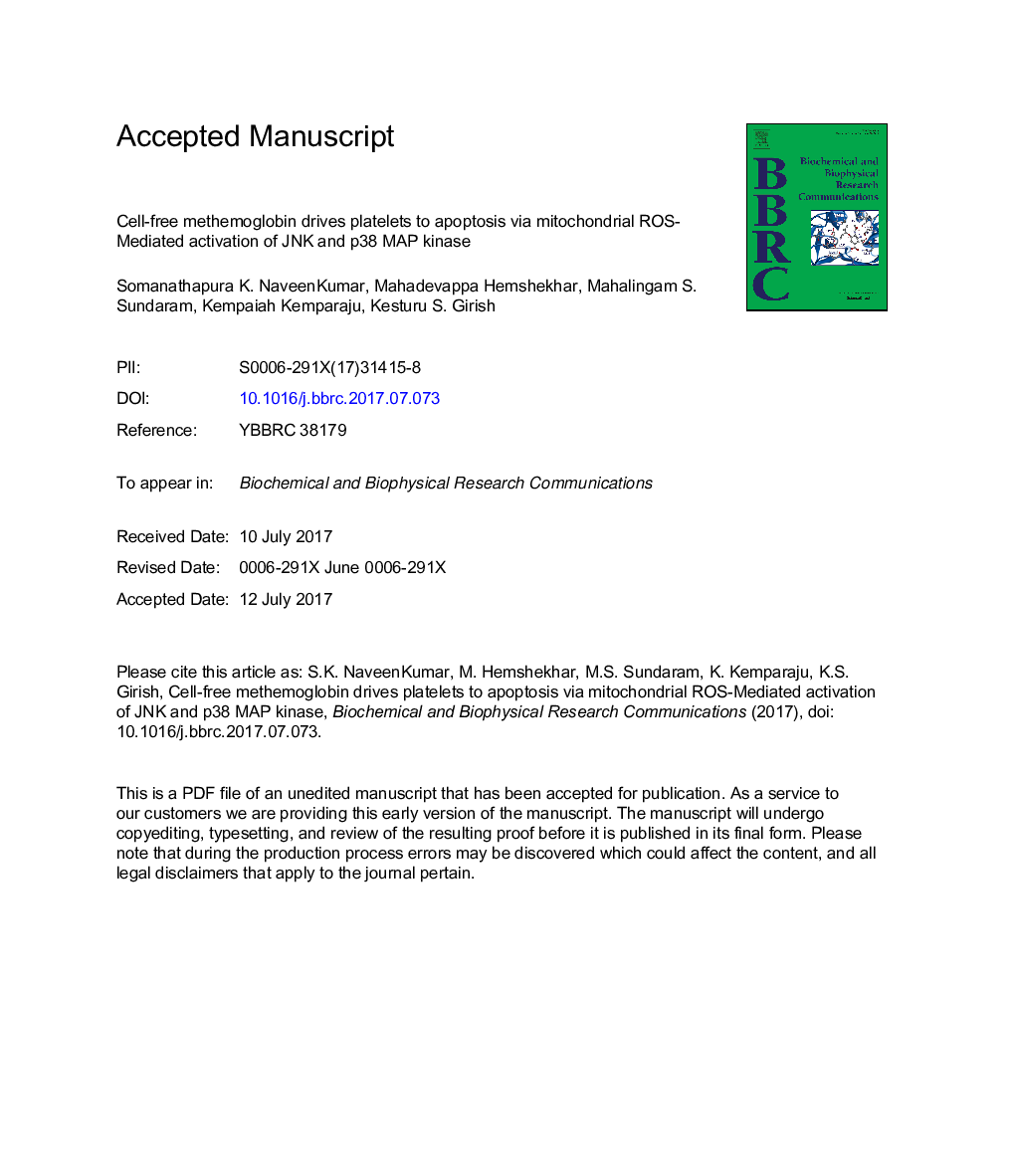| Article ID | Journal | Published Year | Pages | File Type |
|---|---|---|---|---|
| 5504817 | Biochemical and Biophysical Research Communications | 2017 | 21 Pages |
Abstract
Cell-free hemoglobin (Hb), a well-known marker of intravascular hemolysis, is eventually oxidized to methemoglobin (MtHb). Elevated levels of MtHb have been noted, alongside depleted levels of platelets, in several hemolytic diseases. The current study aims to probe the possible role of MtHb in platelet death, based on the facts that it is a pro-inflammatory and pro-apoptotic agent, as well as the sensitive nature of platelets and their tendency to undergo apoptosis under oxidative stress. An attempt is made to establish the link between hemolysis and thrombocytopenia, by deciphering the underlying molecular signaling pathways. The results of this study demonstrate that MtHb, not Hb exerts oxidative stress on platelets, which triggers their death via ROS-mediated mitochondrial apoptotic pathway. It was further established that the MtHb-induced platelet apoptotic events mediate through JNK and p38 MAPK activation. Thus, the study presents a mechanistic insight into the previous studies that reported the incidence of thrombocytopenia in hemolytic diseases. This study highlights the fate of platelets in intravascular hemolytic conditions, which demands the need for a specific treatment strategy considering the risks associated with thrombocytopenia during severe hemolytic diseases.
Related Topics
Life Sciences
Biochemistry, Genetics and Molecular Biology
Biochemistry
Authors
Somanathapura K. NaveenKumar, Mahadevappa Hemshekhar, Mahalingam S. Sundaram, Kempaiah Kemparaju, Kesturu S. Girish,
